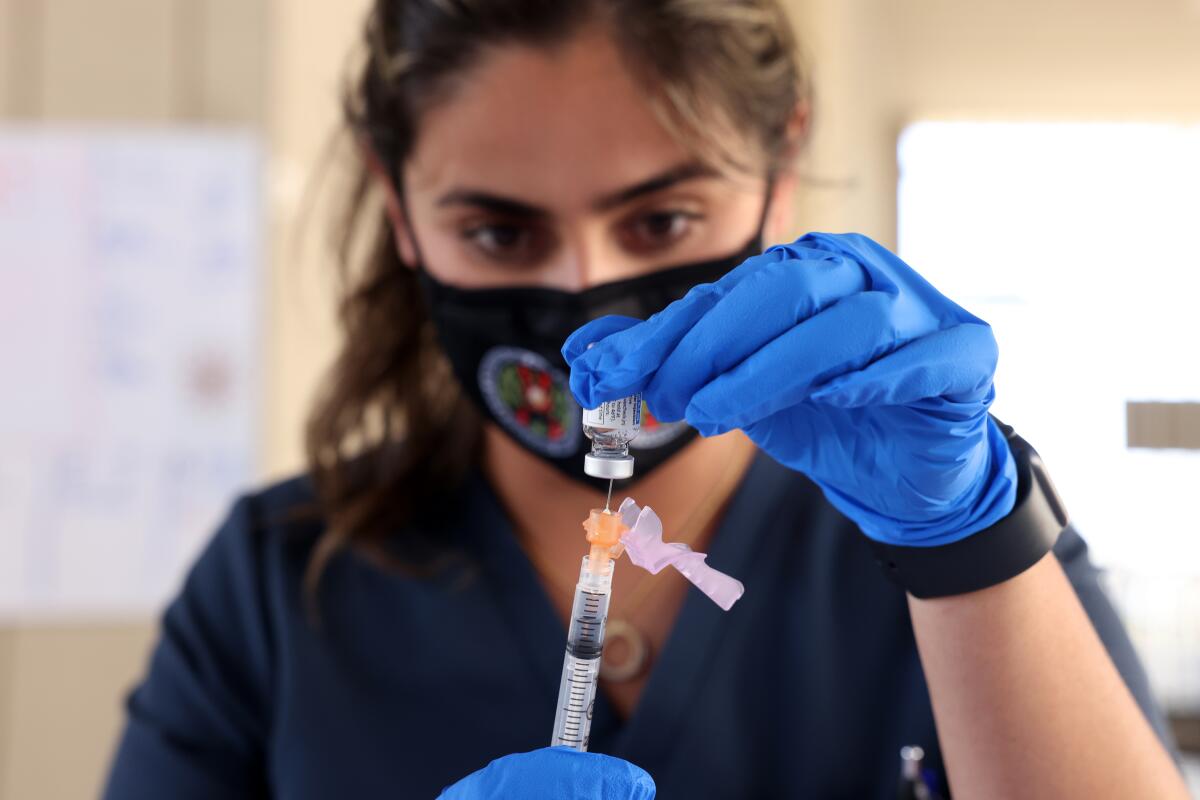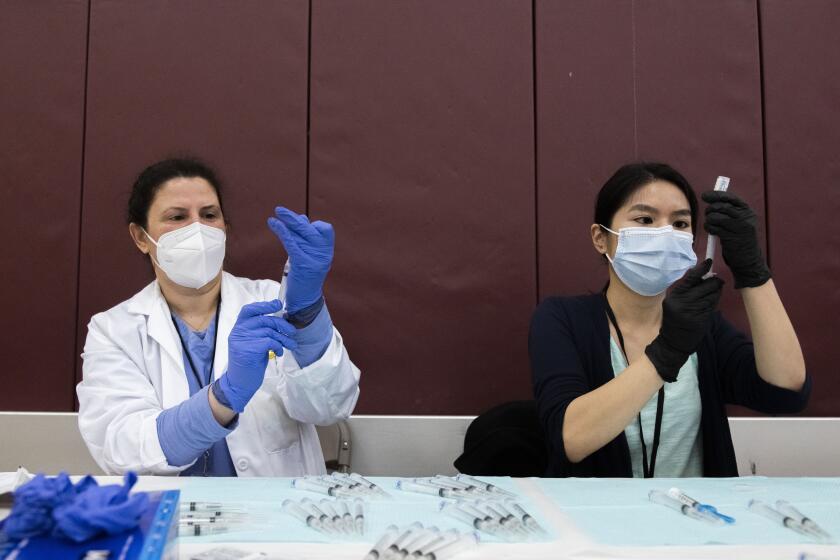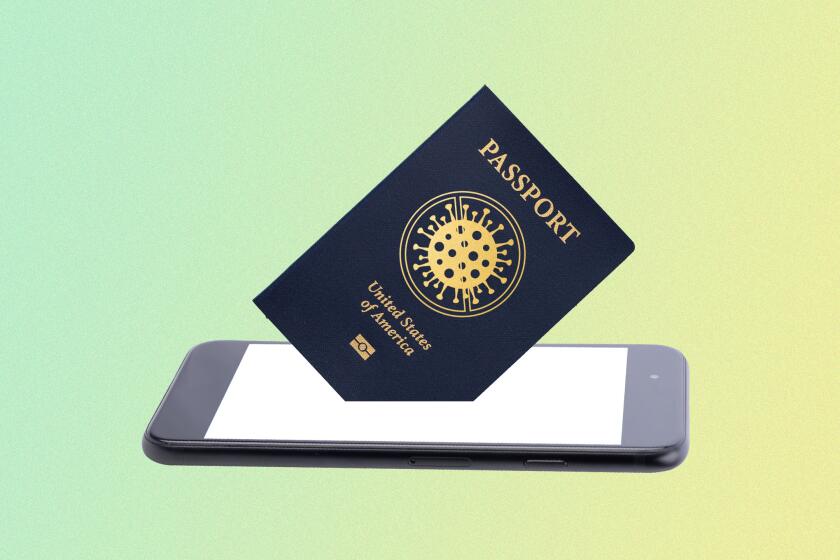Only 30% of L.A. County men got COVID-19 vaccine, compared to 44% of women. Why the disparity?

- Share via
A man took his adult children to receive COVID-19 vaccinations over the weekend, knowing it was important for them to be immunized against the disease.
But he didn’t feel concerned about his own risk of catching the virus, despite the fact that older people and men are more likely to die from COVID-19, Barbara Ferrer, L.A. County’s public health director, said this week. He had not made plans to get vaccinated.
“I was worried about him, and so were his children,” said Ferrer, who encountered the family at a Los Angeles vaccination site. “What’s staggering to realize is that the very group of folks who have the higher mortality rate are now also the group of folks that have the lower vaccination rates.”
Throughout the pandemic, men worldwide have been far more likely to die from COVID-19 — because of a mix of biological and behavioral factors — but also less likely to have been vaccinated against the disease.
Two COVID-19 vaccines have now been linked to a risk of developing blood clots. Scientists don’t know whether the vaccines are to blame.
The data from L.A. County paint a troubling picture: Here, 153 of every 100,000 women have died from COVID-19, while 289 of every 100,000 men have.
But while 44% of women in L.A. County have received at least one dose of a vaccine, only 30% of men have.
And in the 38 states that have published a gender breakdown of vaccination rates, more women have been vaccinated than men in all of them, according to Kaiser Health News.
The disparity is in part because vaccinations were initially offered to healthcare workers and the elderly, groups that are disproportionately composed of women. But it also probably reflects long-standing patterns of men engaging in riskier behavior and paying less attention to their health than women, experts say.
“Unfortunately, it’s not terribly surprising to see that there’s gender differences in uptake for vaccinations,” said UC Riverside medical sociologist Richard Carpiano.
Ferrer said the health department would focus on targeting vaccine messaging at men and improving access to the vaccine. The vaccine distribution is particularly low among Black and Latino men in L.A. County, with only 19% and 17%, respectively, having gotten one shot of the vaccine so far, according to county data.
“You obviously want people at highest risk to be getting vaccinated and to be getting vaccinated quickly,” Ferrer said.
In general, men tend to be less cautious than women and more prone to risk, as evidenced by the high cost of insuring young men to drive cars, Carpiano said. A lot of men are also socialized to not ask for help, which has contributed to low rates of mental health treatment among men and perhaps now also lower coronavirus vaccination rates, he said.
“You see films kind of reflect that too — the guy’s the action hero,” Carpiano said. “There’s always this kind of conception, a certain sort of toughness, avoiding things that permeate that. We see that manifest itself in healthcare-seeking behaviors as well.”
Indeed, throughout the pandemic, multiple surveys have found that women take more precautions to stave off coronavirus infections, somewhat ironic given that men have a higher chance of dying from the virus if they contract it. A Gallup poll last year found that women were more likely than men to wear masks, social distance and avoid large crowds.
The survey showed that political leanings accounted for some of that difference, as men were more likely to identify as Republican and Republicans less likely to follow coronavirus precautions. But even within each political party, women were more worried about the virus and followed more safety recommendations.
Perhaps that same tendency toward caution extends to the COVID-19 vaccine. A viral tweet from a reporter in North Carolina showed that many vaccinated people listed the same reason for getting their shots: Their wives made them.
We explain what vaccine passports are, how they work, where they’ve been implemented, and why some people object to them.
Even before the pandemic, women tended to visit the doctor more and are more likely to oversee a family’s health decisions, research finds. Women typically start regularly visiting the doctor earlier, often beginning with a first trip to the OB-GYN as teenagers, and take advantage of more preventative services, such as cancer screenings.
“There are gender differences in healthcare utilization, so this outcome where you have a higher share of women getting vaccinated is consistent with that,” said Alina Salganicoff, director of women’s health policy at the Kaiser Family Foundation.
Over the past year, Salganicoff has published data showing that women reported being more concerned than men about themselves and their families contracting the coronavirus and also experienced a greater mental health toll from pandemic stress.
That suggests that while the gap in vaccination rates between men and women may narrow as the shots are made available to a wider swath of the population, it may not close completely, she said.
“I would not be surprised,” she said.
More to Read
Sign up for Essential California
The most important California stories and recommendations in your inbox every morning.
You may occasionally receive promotional content from the Los Angeles Times.













